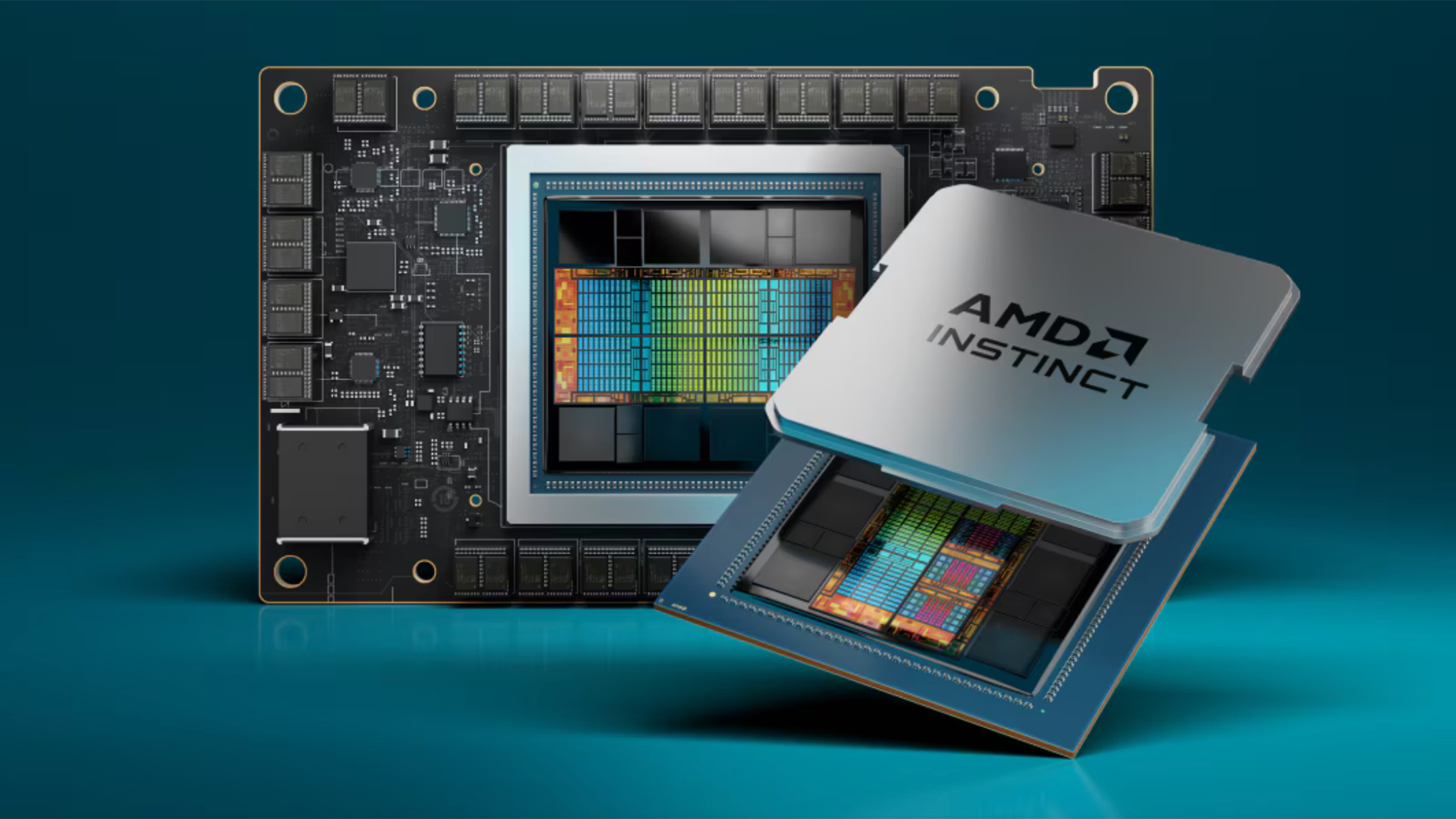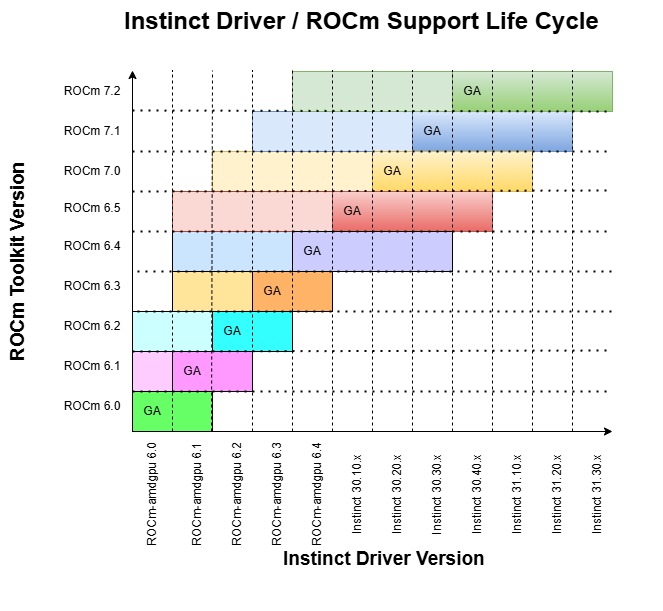AMD splits ROCm toolkit into two parts – ROCm AMDGPU drivers get their own branch under Instinct datacenter GPU moniker
AMD's datacenter-focused Instinct GPUs get their own-branded Linux GPU drivers that support significantly more versions of the ROCm toolkit.

AMD is marking a major shift in the development of its ROCm open-source software stack, with the introduction of a new Instinct driver for Radeon Instinct GPUs that will be part of the ROCm toolkit. According to a blog post by AMD, the change aims to improve the toolkit's usability for ROCm users.
The new Instinct driver is a renamed version of the Linux AMDGPU driver packages that are already distributed and documented with ROCm. Previously, everything related to ROCm (including the amdgpu driver) existed as part of the ROCm software stack. But now, AMD is splitting the driver portion of the ROCm software stack into a separate branch that will live independently and carry its own identity.

These changes start with ROCm version 6.4, where ROCm is split into two groups: the Instinct Driver and the ROCm Toolkit. The latter handles everything besides the physical driver itself. The change aims to improve the flexibility of the ROCm software stack, and AMD claims new and exciting features are planned for the Instinct driver that will benefit from ROCm's bifurcation.
Some of these features include "New installation options to remove permission complexities such as user membership in the video or render groups. Future installation options may exclude packages needed to run display outputs to reduce the driver footprint. A future driver release series may be maintained for security fixes for an extended period as long term stability driver. A future driver release series may be maintained for security fixes for an extended period as long term stability driver. Users choosing to use amdgpu from the stock Linux kernels may choose to skip all the installation documentation for ROCm that references the Instinct driver. Please note this is not an AMD support option today."
The reason AMD is bifurcating ROCm seems to be to improve the longevity and flexibility of its GPU drivers. Splitting the drivers from the ROCm toolkit will allow a single Instinct driver to support multiple versions of ROCm toolkits, without upgrading or downgrading the driver to support to whichever toolkit version the user needs.
As a result, the support duration of the new Instinct drivers will greatly increase. Currently, the ROCm AMDGPU drivers support 6 months (backwards and forwards) worth of ROCm toolkit releases. With the new Instinct driver bifurcation, support duration doubles to a full year's worth of ROCm toolkit releases.
Starting with ROCm 6.4, the documentation for the bifurcated ROCm branches can be found at instinct.docs.amd.com. Information on the new Instinct-branded GPU drivers are available on the Instinct driver website. That said, AMD states the versioning scheme for the Instinct drivers will not change (which will inevitably cause some confusion). In ROCm version 6.5, the Insticnt driver version will be separate from the ROCm versioning.
Get Tom's Hardware's best news and in-depth reviews, straight to your inbox.

Aaron Klotz is a contributing writer for Tom’s Hardware, covering news related to computer hardware such as CPUs, and graphics cards.
-
bit_user I believe this is basically what Nvidia does. Each version of their compute device driver supports a certain range of CUDA versions. There are also different compute drivers for various ranges of GPU generations. Then, the compute driver and the CUDA runtime are typically installed as separate packages, so you can choose the driver according to which GPU you have, which kernel you have, and which versions of CUDA you want to run.Reply -
ejolson That's right. Nvidia also releases separate packages for their kernel driver.Reply
I think amdgpu now has a stable enough API that it doesn't need tight synchronisation with ROCm. Another reason to remove the driver from the toolkit is because it is and will further be integrated into the Linux source tree.